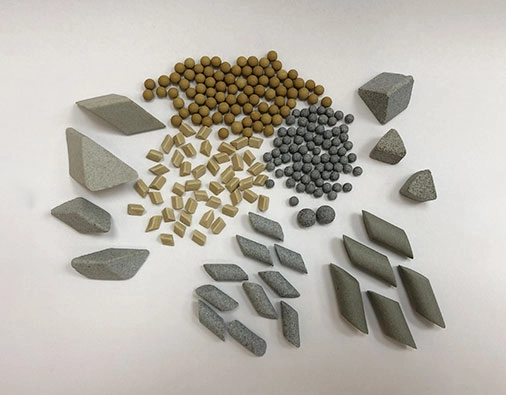Ceramic abrasives are advanced materials widely used in various industries for grinding, cutting, and polishing applications. Known for their durability, high hardness, and sharp cutting edges, ceramic abrasives have become a preferred choice for professionals seeking efficiency and precision in material removal processes. In this blog, we will explore the benefits, applications, and key features of ceramic abrasives.
What Are Ceramic Abrasives?
Ceramic abrasives are abrasive materials made from synthetic ceramics, typically composed of aluminum oxide , zirconia, or silicon carbide . These abrasives are engineered to have high hardness, toughness, and wear resistance, making them ideal for demanding applications where other abrasive materials may fail. The manufacturing process involves sintering ceramic particles at high temperatures, resulting in a material with exceptional strength and cutting performance.
Key Benefits of Ceramic Abrasives
- High Hardness: Ceramic abrasives have a higher hardness compared to traditional abrasives like aluminum oxide or garnet, allowing them to cut through tough materials with ease.
- Durability: The toughness of ceramic abrasives ensures a longer lifespan, reducing the frequency of replacement and minimizing downtime in industrial processes.
- Consistent Performance: Ceramic abrasives maintain their sharp cutting edges throughout their lifespan, providing consistent material removal rates and surface finishes.
- Heat Resistance: Ceramic abrasives can withstand high temperatures generated during grinding and cutting, preventing damage to both the abrasive and the workpiece.
- Versatility: These abrasives are suitable for a wide range of materials, including metals, composites, ceramics, and even some plastics.
Applications of Ceramic Abrasives
Ceramic abrasives are used across various industries due to their versatility and performance. Some common applications include:
- Metalworking: In metalworking, ceramic abrasives are used for grinding, deburring, and finishing metals like steel, stainless steel, and titanium. Their high hardness and heat resistance make them ideal for precision grinding and cutting in demanding environments.
- Automotive Industry: Ceramic abrasives are widely used in the automotive industry for tasks such as grinding engine components, polishing car bodies, and cutting metal parts. Their durability and efficiency help improve production speed and product quality.
- Aerospace: The aerospace industry benefits from ceramic abrasives for their ability to handle hard-to-machine materials like titanium alloys and composites. These abrasives are used for grinding turbine blades, polishing aircraft components, and maintaining strict tolerances.
- Construction: In the construction industry, ceramic abrasives are employed for cutting and grinding concrete, masonry, and stone. Their toughness and sharp cutting edges enable efficient material removal, even in abrasive environments.
- Woodworking: Ceramic abrasives are also used in woodworking for sanding and finishing wood surfaces. Their consistent performance ensures smooth finishes and precise material removal, making them a favorite among professionals.
Key Features of Ceramic Abrasives
Understanding the key features of ceramic abrasives helps in selecting the right product for specific applications. Some of the essential features include:
- Aggressive Cutting Action: Ceramic abrasives are designed to provide an aggressive cutting action, allowing for fast material removal while maintaining precision.
- Self-Sharpening Grains: The grains in ceramic abrasives are self-sharpening, meaning they break down in a controlled manner, constantly exposing new sharp edges for continuous cutting efficiency.
- Heat Dissipation: Ceramic abrasives have excellent heat dissipation properties, which help prevent overheating and burning of the workpiece, ensuring a clean and accurate finish.
- Low Dust Generation: Compared to some other abrasive materials, ceramic abrasives generate less dust, contributing to a cleaner and safer working environment.
- Compatibility: Ceramic abrasives are compatible with various machines and tools, including angle grinders, belt sanders, and bench grinders, making them a versatile choice for different tasks.
Conclusion
Ceramic abrasives are a crucial component in modern industrial processes, offering unmatched performance in grinding, cutting, and polishing applications. Their high hardness, durability, and versatility make them an excellent choice for professionals seeking reliable and efficient abrasive solutions. As industries continue to evolve, the demand for high-quality ceramic abrasives will only increase, cementing their position as a top choice in the world of abrasives.
